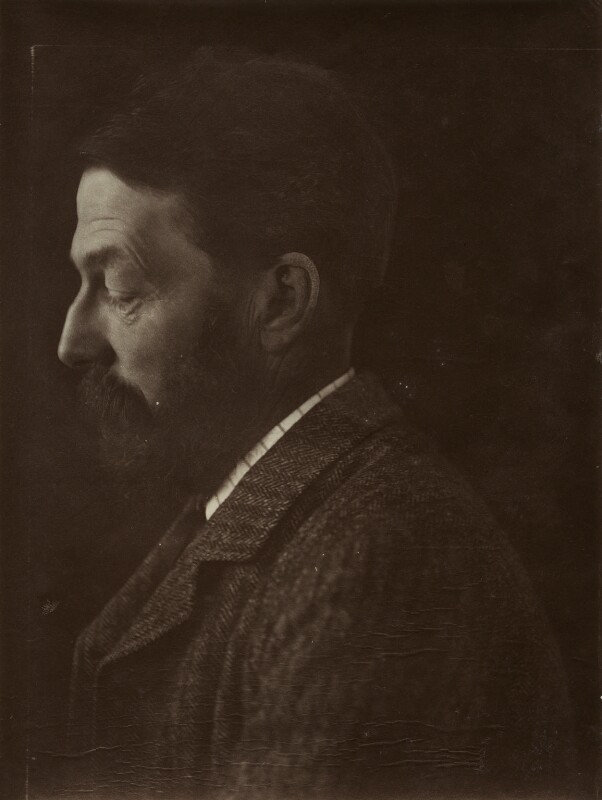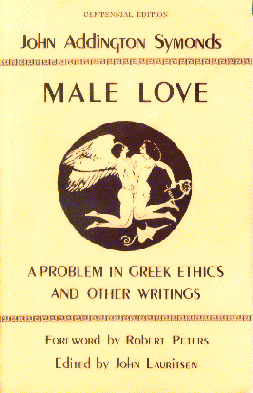Who was John Addington Symonds?

John Addington Symonds was an eminent author, a literary critic and a cultural historian prominently known for his work on Renaissance in Italy. Another reason for his popularity was his advocacy of ‘same-sex desire’ using historical evidence and inclusion of such relationships in day-to-day life.
Early Life of John Symonds
Symonds was born in 1840 in Bristol, England to a physician and subsequently an author, John Addington Symonds Sr. He was a delicate child and suffered from sleepwalking and nightmares which lead to him almost drowning while sleepwalking. He began his education at Harrow and was introduced to classic Greek literature – The Iliad, the Republic and other similar texts.
Although Harrow was a conventional school which prevented advocacy of any homoerotic sentiment, Symonds found his first connection with literature suggesting homosexual relationship right here.
He discovered the Greek works of ‘The Symposium’ and the ‘Phaedrus’ – and subsequently found ‘piaderastia’ which was the social institution of erotic relationships between an older and a younger elite man in Athens.
This led him to discover a concept that these works described which did not have any corresponding words in English and used a Greek phrase to describe it which when translated is ‘love of impossible things’. Thus when he graduated in 1858, his mind was filled with questions of philosophical and moral nature.
He went on to study at Oxford University where he chanced upon the realization through debates and research that ‘same-sex love’ needed more representation and acceptance in historical as well as moral context.
Sometime later, a nervous breakdown led him to move to Switzerland where he met Janet Katherine North and they got married, settling back in London. There are accounts of him having affairs with men during the term of his marriage. One such affair became the inspiration for his compelling composition published in 1880 as ‘New and Old: A Volume of Verse’.
Works of John Addington Symonds
Through his extensive readings and analysis of works of Jowett, Conington as well as Hegel, Symonds began his mission of reconstruction of the spirit of history through his writings so the public can learn to acknowledge it. His seven-volume history of the Renaissance in Italy is written in pursuance of the aforementioned mission.
He illustrated the homoeroticism during the Renaissance which several scholars associate with Symonds own sexuality. But this illustration was just a part of his writings on the representation of ‘same-sex love’ throughout history. He thought it as ‘‘one of the few adequate works of scholarship I can call my own,’’ and it continues to be well celebrated.
The questions that he first encountered during his time at Harrow were now discussed and answered in 1873 in his essay ‘A Problem in Greek Ethics’. These were questions he was unable to discuss on public platforms and thus he used this medium to document the presence of homosexual relationships in Ancient Greece as well as the ethics that governed them and highlights that such behaviour was observed in several other cultures as well.

Writing Style of John Addington Symonds
It is often observed that Symonds writings were an expression of his frustration with respect to his own sexual orientation and the lack of acceptance thereof. He was influenced by great thinkers of his era as well as the past including Walt Whitman whose ‘Leaves of Grass’ was a subject of Symonds’ deep scrutiny with the homoerotic lens.
Although he has the same intellectual skillset as many of his contemporaries, he stood apart in his ability to critically analyse historic concepts with lenses of morality and hypocrisy. His writings gave a fresh perspective to the advocates and practitioners of traditional intellectual history.
Later Life of John Symonds
In 1878, Symonds suffered from tuberculosis and to improve his health, he moved to Davos, Switzerland along with his family. Davos eventually became his home where he engaged in the public affairs of the town.
This is when he wrote most of his books – biographies of Shelley (1878), Philip Sidney (1886), Ben Jonson (1886) and Michelangelo (1893), several volumes of poetry and essays, and a translation of the Autobiography of Benvenuto Cellini (1887).
This move also gave him access to German sexology based literature. Even on his deathbed, he published several works such as a volume of essays called ‘In The Key of the Blue’ and a monograph on Walt Whitman.
Unfortunately after Symonds passing, his friends destroyed most of his private writings and locked away his Memoirs manuscript in London Library which was made inaccessible even to his own daughters.